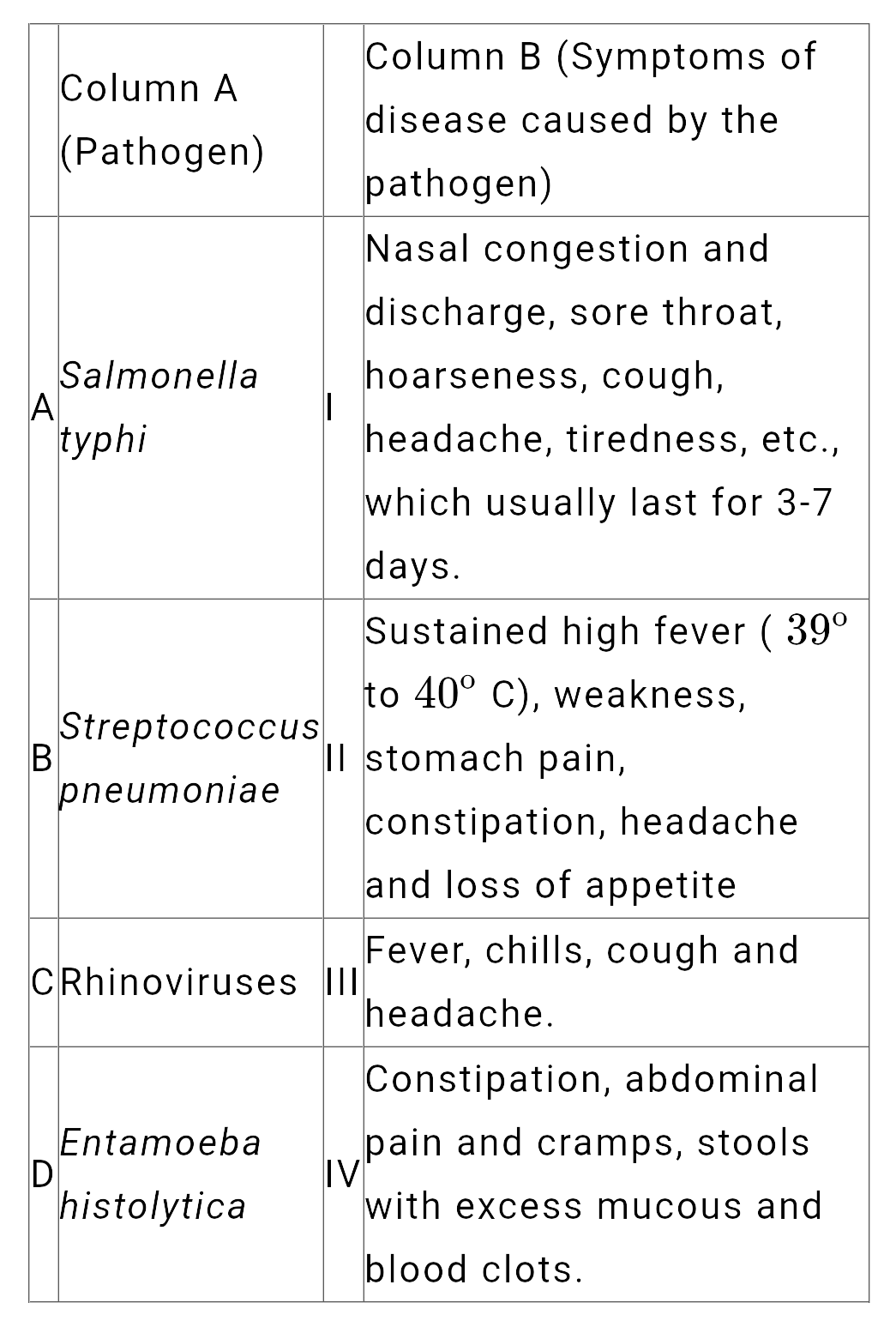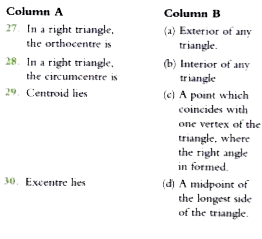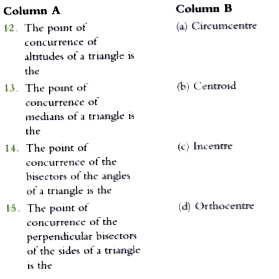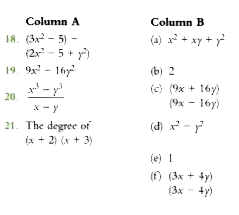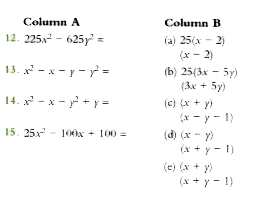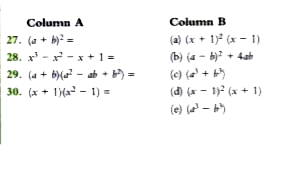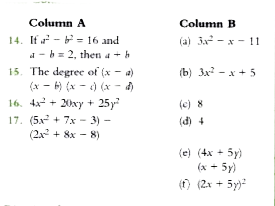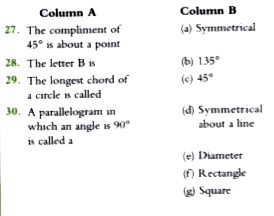Match column-A with column and select the correct option. a.IgG(Column-A) (i) Secretory antibody(Column-B) b. IgA(Column-A) (ii) Largest in size(Column-B) c.IgM(Column-A)(iii) Passes through placenta(Column-B) d. IgE(Column-A) (iv) Allergic response(Column-B)
a(i), b(ii), c(ii), d(iv)
a(ii) b(i), c(ii), d(iv)
a(iv), b(iii), c(ii), d(i)
a(i), b(ii), c(i), d(iv)
To solve the matching question between Column-A (immunoglobulins) and Column-B (functions), we will go through each immunoglobulin and identify its corresponding function.
1. Identify IgG:
- IgG is known for its ability to cross the placenta. This allows maternal antibodies to provide passive immunity to the fetus.
- Match: IgG (Column-A) → (iii) Passes through placenta (Column-B).
2. Identify IgA:
- IgA is primarily found in mucosal areas and is known as the secretory antibody. It plays a crucial role in mucosal immunity by being present in secretions such as saliva, tears, and breast milk.
- Match: IgA (Column-A) → (i) Secretory antibody (Column-B).
3. Identify IgM:
- IgM is the largest antibody in terms of size and is the first antibody produced in response to an infection. It is typically found in the blood and lymphatic fluid.
- Match: IgM (Column-A) → (ii) Largest in size (Column-B).
4. Identify IgE:
- IgE is associated with allergic reactions and responses to parasitic infections. It binds to allergens and triggers histamine release from mast cells.
- Match: IgE (Column-A) → (iv) Allergic response (Column-B).
Final Matches:
- a. IgG → (iii) Passes through placenta
- b. IgA → (i) Secretory antibody
- c. IgM → (ii) Largest in size
- d. IgE → (iv) Allergic response
Conclusion:
The correct option that matches Column-A with Column-B is:
- A is third (iii)
- B is first (i)
- C is second (ii)
- D is fourth (iv)
Thus, the answer is the second option.
---
- IgG is known for its ability to cross the placenta. This allows maternal antibodies to provide passive immunity to the fetus.
- Match: IgG (Column-A) → (iii) Passes through placenta (Column-B).
- IgA is primarily found in mucosal areas and is known as the secretory antibody. It plays a crucial role in mucosal immunity by being present in secretions such as saliva, tears, and breast milk.
- Match: IgA (Column-A) → (i) Secretory antibody (Column-B).
- IgM is the largest antibody in terms of size and is the first antibody produced in response to an infection. It is typically found in the blood and lymphatic fluid.
- Match: IgM (Column-A) → (ii) Largest in size (Column-B).
- IgE is associated with allergic reactions and responses to parasitic infections. It binds to allergens and triggers histamine release from mast cells.
- Match: IgE (Column-A) → (iv) Allergic response (Column-B).
- a. IgG → (iii) Passes through placenta
- b. IgA → (i) Secretory antibody
- c. IgM → (ii) Largest in size
- d. IgE → (iv) Allergic response
The correct option that matches Column-A with Column-B is:
- A is third (iii)
- B is first (i)
- C is second (ii)
- D is fourth (iv)
Topper's Solved these Questions
Similar Questions
Knowledge Check
Match Column A with Column B and select the correct options :
 AA-iv , B-v , C-iii, D-I, E-iiBA-iv, B-v , C-ii, D-v, E-iiiCA-iii, B-iv, C-I, D-ii, E-vDA-iii, B-v, C-iv, D-ii, E-i
AA-iv , B-v , C-iii, D-I, E-iiBA-iv, B-v , C-ii, D-v, E-iiiCA-iii, B-iv, C-I, D-ii, E-vDA-iii, B-v, C-iv, D-ii, E-i

